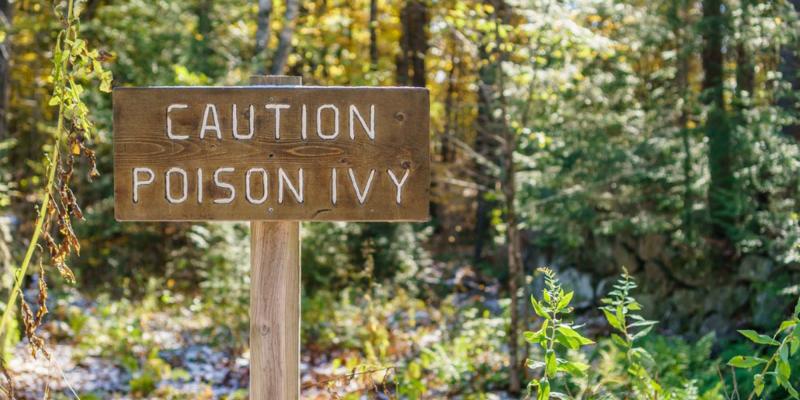We are truly blessed to live in St. Thomas and surrounding area. We have world-class, fresh-water beaches and water sports, some of the continent’s best bird watching, and excellent camping/hiking destinations. At some point, each of us have neglected to take advantage of these benefits. But something is indeed lurking in the woods: a short, stubby perennial that waits to wreak havoc on our skin; a three-leaflet terror that can ruin the best outing and send us racing to the pharmacy or doctor for relief. So vile of a plant that it is even the name of a batman villain—Poison Ivy!
Poison ivy is widespread throughout southern Ontario including Elgin County. It can grow in deep woods or in the open; in dry, sandy areas, crevices of rocks, or swamps; along the borders of woods, fencerows, or roadsides. Usually, it is found in low growing, in rather dense colonies, sometimes practically carpeting the ground. However, it can also manifest as a vine form, which twines around and climbs up trees, shrubs and posts. It varies in colour: from dull to bright green and even orange-red. The leaves may have a glossy or dull surface and may even be somewhat hairy, especially on the lower surface. The edges of the leaves are smooth, toothed or lobed. Despite the differences, the one common characteristic is the presence of three leaflets on the leafstalk. This is the origin of the saying, “Leaves of three-Let it be” (no connection to the Beatles hit: Let It Be).
Poison Ivy contains an oil called urushiol (you-ROO-shee-all). When this oil touches your skin, it often causes an itchy, blistering rash. It’s the same oil found on poison oak and poison sumac. It may stick to your clothing or tools and is easily transferred to your hands and face without direct exposure to the plant. Pets can also become contaminated by running through patches of poison-ivy. Although animals do not react to the oil, a sensitive person can be affected merely by petting a contaminated animal.
If you know you are exposed to poison ivy, immediately wash with warm soapy water. Skin reacts approximately 10 minutes after exposure; so, if you can remove the oil, you may prevent a reaction. In addition, wash all clothing, tools and pets exposed in order to prevent secondary transfer. If you’re unable to do this and a rash occurs, treating the areas with calamine and cool compresses may reduce the burning and itching. Similarly, consult your pharmacist about a mild hydrocortisone cream or oral antihistamines which could reduce the irritation. For severe or widespread cases, see your doctor or nurse practitioner for oral steroids. Take care of yourselves and each other.








